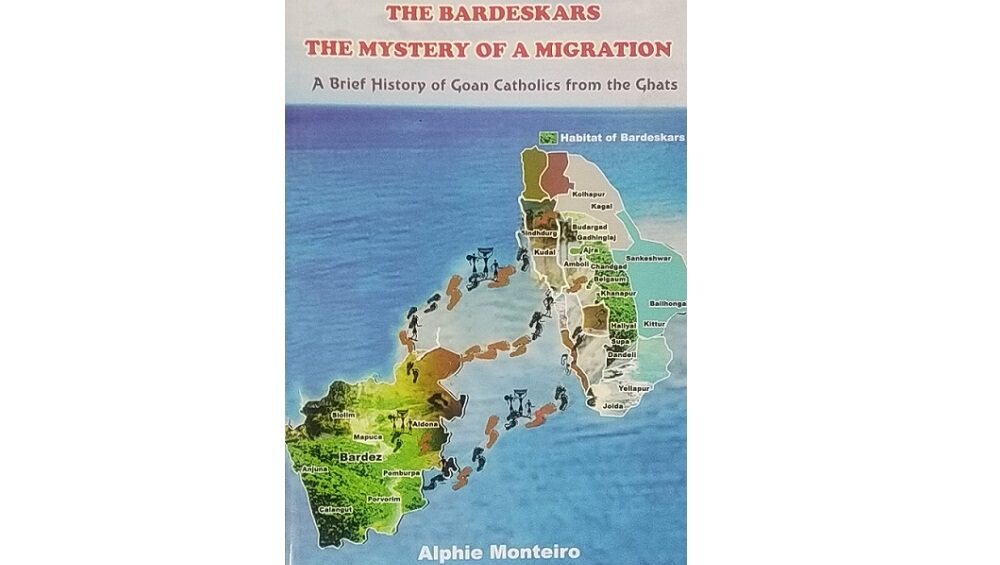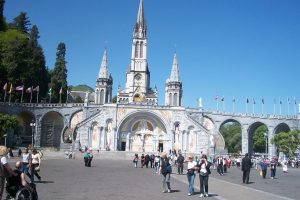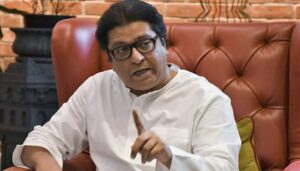The Bardeskars-The Native Goans And Mystery Of Their Migration From Goa A Few Centuries Ago

Camil Parkhe
Pune, 11th April 2021: Soon after appearing for the SSC examination, I left my family in Shrirampur (Ahmednagar district) and joined Fr. Prabhudhar at his `Snehasadan’ residence in Karad as a step to become a Jesuit priest like him. This was in June 1976.
This introduced me to a new Christian community. Fr. Prabhdudhar took me around to Ichalkaranji, Gadhinglaj, Ajara, Chandgad talukas of Kolhapur district and Belgaum district in neighbouring Karnataka state.
During this tours, I was introduced to the Bardeskar community, the Christians who had migrated from Bardez taluka of Goa about three centuries ago and settled in the above places.
The various facets of the Bardeskar community fascinated me. The social, cultural, religious, educational and financial characteristics of this community were drastically different from the Christian community from Aurangabad, Nashik and Ahmednagar districts – a community I represented.
First of all, they spoke a different language in their family and amongst themselves – Konkani, the language of their ancestors from Goa which they had preserved for over 300 years after being cut off from their native land. At that time local Hindus referred to them as Bardeskars- an identity of their migration- but gradually switched over to their original family names from Goa like D’Souza, Fernandes, Monteiro, Lobo, Mascarenhas, et al. Now many of the younger members of this community may not like to be referred to Bardeskars. They would prefer to call themselves natives from Goa.
In addition to the language, their names and surnames, they had also preserved the faith of their ancestors – Christianity, Catholic faith to be precise. In Goa, one does call oneself a Christian but a Catholic. This was indeed a feat considering that there were no priests or catechists who introduced them to tenets of the Christian religion.
The strict adherence of the Bardeskars to the Roman Catholic faith – sans the presence of the clergy for over a century – astonished me. The presence and role of the priests are very important in a well-organised religion like Christianity, especially the Catholic Church. The priests are required to administer the seven sacraments like baptism and wedding in various stages of life of the faithful.
I had experienced how long the absence of the priests led to the wiping out of the Christian faith in the Marathwada region, Ahmednagar, Nashik and other districts in western Maharashtra. In those regions, people who embraced Christianity under the influence of the European Protestant and Catholic missionaries in the 19th and 20th centuries later did not get adequate pastoral care and had therefore returned to Hinduism or embraced Buddhism. The Bardeskars community, it seemed, was strongly entrenched into the religious faith of their ancestors.
Once Fr. Prabhudhar took me to Gadhinglaj where J. B. Bardeskar had established Sadhana Vidyalaya. This made me aware of the progress the Bardeskars had achieved in social and educational spheres.
Bardeskar Sir to whom I met at his residence was at that time one of the tallest and most respected figures in the Bardeskar community. The other members of the Bardeskar community had also gained a respectable status among the majority populace. Some were teachers in colleges and schools while others were employed in respectable positions in government departments and private firms.
After migrating from Goa two-three centuries ago, Bardeskars in the borderlines of Kolhapur and Belgaum districts (adjoining the Western Ghats) have fully assimilated into the local populace, acquiring fluency in local Marathi and Kannada languages, and yet, maintaining their distinct identity with preservation of their mother tongue Konkani and Christian faith. While travelling to Ajara, Watangi, Hebbal, Chandgadh, Santibastwad near Belgaum and other places, I realised that the Bardeskars had also acquired land, built houses in their new, migrated land. Possession of the agricultural land helped them to be one among the other populace and also offered them gainful livelihood.
The English medium school, Rosary School Ajara, Sarvodaya Khanapur and Sadhana Vidyalaya from Gadhinglaj helped the children to acquire fluency in the language of the modern age.
Once I attended a marriage of a Bardeskar couple, perhaps in Watangi near Ajara. There I was introduced to the folklore, marriage rituals and traditions followed in this community. There were Konkani folk songs when the bridegroom and bride left their houses for the marriage ceremony. The men and women joined in singing the Konkani songs as the marriage parade went from one place to the and later reached the church where a priest administered the wedding sacrament to the couple.
I also attended the ordination ceremony of Fr. Caridade Drago, a Jesuit, at his native place Santibastwad near Belgaum. There were similar rituals and songs before the ordination ceremony which was presided over by the Belgaum diocese bishop. (Only a bishop or clergy of a higher rank in the Catholic Church can preside over the ordination ceremony of a priest.)
A few years before that, I had also attended the ordination ceremony of Fr. James Shelke, also a Jesuit, at his native village Umbari near Sangamner in Ahmednagar district. In both cases, the local Christian community had hosted meals for the gathered assembly on the occasion. At Fr. Shelke’s ordination ceremony, there were no typical local Christians’ rituals and tradition as Christianity in the Ahmednagar district in the 1970s was only 100 years old and hardly a couple of priestly ordinations had taken place in this community by that period.
These Konkani folk songs, rituals and other traditions connected to the marriage and other ceremonies were brought along by the Bardeskars when they left their native villages in Bardez in Goa two centuries back. I wondered whether these songs are still sung and this kind of marriage traditions are followed to this date back in those villages in Goa?
The same also holds true about various Konkani words, Portuguese –origin phrases as well as songs, spoken by the Bardeskars now and which may have been now extinct in the vocabulary of people in Goa. Invariably, some Marathi or Kannada words too may have slipped into the vocabulary of the Bardeskars.
It is a known fact that the Konkani spoken among the Catholics, especially in South Goa, has many Portuguese-origin words like Kadel for chair, whereas the Hindus may use the word Khurchi which is also used in Marathi. Similar other Portuguese-origin words are Kantar for song (Gayan or Gaani in Marathi) Kaajar for wedding (Lagna in Marathi), Igraj for Church, Kapel for chapel, and so on.
These migrated people however took the utmost care to retain their umbilical cord with their villages in Goa. They renewed their shares or Zonne in the village Communidade – a cooperative of landholding villagers –which is only seen in Goa and nowhere else in India. The elders took pains to visit Goa to register the names of their children as heirs as Zonnkar in the Comunidade, similar to the Index 7/12 form of the British legacy in India.
During the subsequent frequent visits to various villages in the Kolhapur district, I realised that the Bardeskars were not exactly a homogenous community as it seemed to outsiders. There was no tradition of marital relations among all families of Bardeskars. Some families from a village would have marital relations with only families of particular villages. This underlined the caste differences among the Catholic Bardeskar community – a legacy of their castes before their conversion to Christianity in Goa 200 or 300 years before.
People belonging to the Saraswat, Kshatriya and various other castes were converted to Christianity after the Portuguese established their political rule in Goa in the early 16th century. Despite the Church’s emphatic refusal to accept the existence of casteism among the Christians, the practice had nonetheless continued over the past few centuries and the Bardeskars had carried along with them this dubious legacy.
St. Francis Xavier whose relics are kept at Bom Jesu Basilica in Old Goa has also been a factor drawing the Bardeskars to their native place. Even during the Portuguese regime which ended only in 1961, the Bardeskars visited Goa to attend the feast of this Goencho Saiba, falling on December 3.
Goans are spread in different parts of India and also all over the world. What is the definition of a Goan? It is a most debatable and controversial issue just like the definition of Punekar. Books have been written on the true identity of a Goan. Bardeskars are true Goans although often those residing in Goa may scoff at them as being ‘Bhailo’, the outsider.
As a reporter of The Navhind Times English daily at Panjim in Goa in 1983, I covered the news of Fr. Prabhudhar leading a team of pilgrims from the Kolhapur district to participate in the annual feast of St. Francis Xavier at Old Goa. The pilgrims had covered the distance from Ajara in Kolhapur district to Old Goa on foot and our newspaper had highlighted the news with my byline and a headline ‘’Their ways of reaching Him’’.
This news aroused the curiosity of these Goans settled in neighbouring states and there were a couple of letters to the editors in this regards. This further prompted me to write two articles in The Navhind Times on the prevalent social, economic, religious and linguistic situation of the Bardeskars and various theories related to the causes of their migration.
Reading these two articles, South Goa’s then independent Lok Sabha member and also a Konkani writer Uday Bhembre, congratulated me on highlighting the hitherto unknown aspects of the Bardeskar community and appreciated the Bardeskars for the preservation of their mother tongue in their new land despite many odds. He further added that the Bardeskar community settled outside Goa is a fine case study for researchers in various faculties of knowledge including sociologists, historians, anthropologists, linguistics and others.
There was a long-felt need to conduct research on the exodus of the Christian community from Bardes taluka to neighbouring Maharashtra and Karnataka states. As Pune-based Alphie Monteiro has now written a book on the history and culture of the Brdeskar community, entitled ‘’The Bardeskars-The history of migration”.

The book was published on Sunday, April 10 in an online ceremony attended by Belgaum Bishop Derek Fernandes and Pune Bishop Thomas Dabre. The quest for knowing the roots and origins of the Bardeskar community has led Monteiro to conduct this research. I have known the author for the past several years and the issue of various theories about the migration of the Bardeskars from Goa invariably featured in our conversation.

In his quest for the right answers, Monteiro has met several people, referred to various books and articles. As a person interested in the social history of Bardeskars and also Christians in India, I am happy to be part of this journey searching the root of the Bardeskar community.

(Camil Parkhe is a senior journalist based in Pune. He started his journalism career in Goa and has worked in various newspapers in different capacities.)








